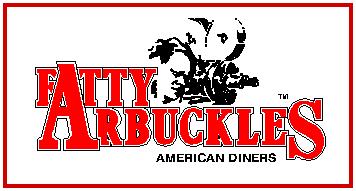How did Dunlop Slazenger become one of the largest manufacturers of sporting equipment in the world?

Dunlop was established as a rubber goods company in 1889. In 1909, it moved into sporting goods when it began to manufacture 144 golf balls a day at Manor Mill in Birmingham. In their first year, Dunlop balls won five of the major British golf tournaments.
The success of the Dunlop golf ball led the company to enter into tennis ball production from 1924. Tennis rackets were introduced from 1925. F A Davis, sports manufacturers, was taken over in 1925 in order to acquire a distribution network.
One third of British open tournaments used Dunlop tennis balls by 1926.
Gardner Brothers of Waltham Abbey in Essex was acquired in 1929. Production of rackets was transferred to the site. Waltham Abbey was the largest producer of tennis rackets in Europe within a few years.
The decade saw Dunlop established as a leading sporting goods supplier due to a mechanised production line, which reduced costs, as well as a strong commitment to research and development. It was considered the foremost manufacturer of golf balls.
Dunlop was the largest manufacturer of sporting equipment outside of the USA by 1933. More than three million golf balls, three million tennis balls and 80,000 rackets were produced in 1936.
Production of golf balls was temporarily discontinued in 1941 due to war work and a lack of rubber supply.
After the war, Dunlop transferred production of golf balls and tennis balls from Fort Dunlop to Speke, Liverpool, where it had leased a former aircraft factory.
Dunlop’s Fort Maxply tennis rackets were used by more than half of the competitors at Wimbledon in 1952.
Slazenger, a major English sporting goods rival, was acquired in 1959.
Dunlop Sport exports amounted to £1.6 million in 1960. The business was a world leader in golf and tennis.
Dunlop and Slazenger ranked alongside Wilson and Spalding as the leading manufacturers of quality tennis rackets.
Carlton Sports of Saffron Walden, Essex, manufacturer of badminton rackets and shuttlecocks, was acquired in 1968.
By the end of the 1960s Dunlop Slazenger had established nearly 30 factories across Britain, Ireland, France, Germany, the USA, Canada, Australia, New Zealand, South Africa, Japan, the Philippines, Malaysia and Indonesia.
Astronaut Alan Shepard used a Dunlop 65 ball when he played golf on the moon in 1971.
A golf ball and club factory was established at Normanton, Yorkshire, in 1973.
62 percent of all tennis rackets used at Wimbledon in 1973 were made by either Dunlop or Slazenger.
A new tennis ball factory was established in the Philippines in 1977.
The Speke factory was closed in 1979. Golf ball production was concentrated at Normanton.
Rationalisation saw Dunlop Slazenger exit niche categories such as table tennis and archery.
Production of rackets at Waltham Abbey in Essex fell prey to cheaper imports produced overseas, and the factory was closed in 1979, with production concentrated on the Slazenger site at Horbury in West Yorkshire.
Dunlop Slazenger supplied twice as many Wimbledon competitors in 1980 as its nearest rival, Wilson. Graphite rackets were introduced from 1980.
From 1981 to 1988, Dunlop Sports sponsored John McEnroe in the most expensive tennis sponsorship deal in the world, worth $500,000 annually, plus commissions on McEnroe branded rackets.
More tennis Grand Slams have been won with Dunlop rackets than any other brand.
By 1982 Dunlop Slazenger had annual sales of £100 million, but it was struggling to remain profitable. In 1983 the company lost £6 million. Alan Finden-Crofts was appointed chief executive, and identified the company weaknesses as a local (as opposed to international) outlook, weak marketing and a lack of a global strategy. By 1986 he had turned around the company to make an annual profit of £16 million.
Wooden tennis racket production ended in 1984 as customers increasingly preferred lightweight graphite equipment.
The Slazenger factory at Horbury, Yorkshire was closed in 1986. The majority of production was transferred to the Far East.
Dunlop Slazenger was acquired by Cinven, a private equity firm, for £372 million in 1996. Cinven sold Dunlop’s rights to the Puma sports brand in Britain back to its German parent. Cinven invested heavily into the business to make it profitable.
Much of the Dunlop Slazenger sports equipment was manufactured in China by the turn of the century.
Dunlop Slazenger held 15 percent of the United States golf ball market by 2000.
Cinven “struggled with outdated management systems, missing orders and overlapping sales teams, competing to sell Slazenger golf balls and the upmarket Maxfli range to the same customers”.
The Normanton factory was closed with the loss of 69 jobs in 2000. Production was relocated to the United States.
Dunlop Slazenger was taken over by its lenders, led by Royal Bank of Scotland, in 2001.
Sales of tennis, golf and squash balls, as well as shuttlecocks, accounted for almost 70 percent of sales by this time, with annual sales of nearly 150 million units.
The Maxfli golf brand was sold to Adidas for £20 million in 2002.
A large tennis ball manufacturing plant in Barnsley, Yorkshire was closed in 2002, and the machinery was shipped to a facility outside Manila in the Philippines. Token production in Germany and South Africa also ended, and the Philippine plant became the sole supplier of Dunlop Slazenger tennis balls. Due to Dunlop Slazenger’s high market share, the company estimated that 60 percent of the world’s tennis balls and 90 percent of squash balls were manufactured at the site.
Dunlop was producing around 250,000 golf balls every day by 2003.
RBS returned the business to profitability and sold the company to Sports Direct for £40 million in 2004. Sports Direct closed the head office at Camberley with the loss of 37 jobs.
Sports Direct sold Dunlop Sport to Sumitomo Rubber Industries of Japan for £112 million in 2017. Sports Direct retained control of Slazenger, thus reversing the effects of the Dunlop Slazenger merger in 1959.











